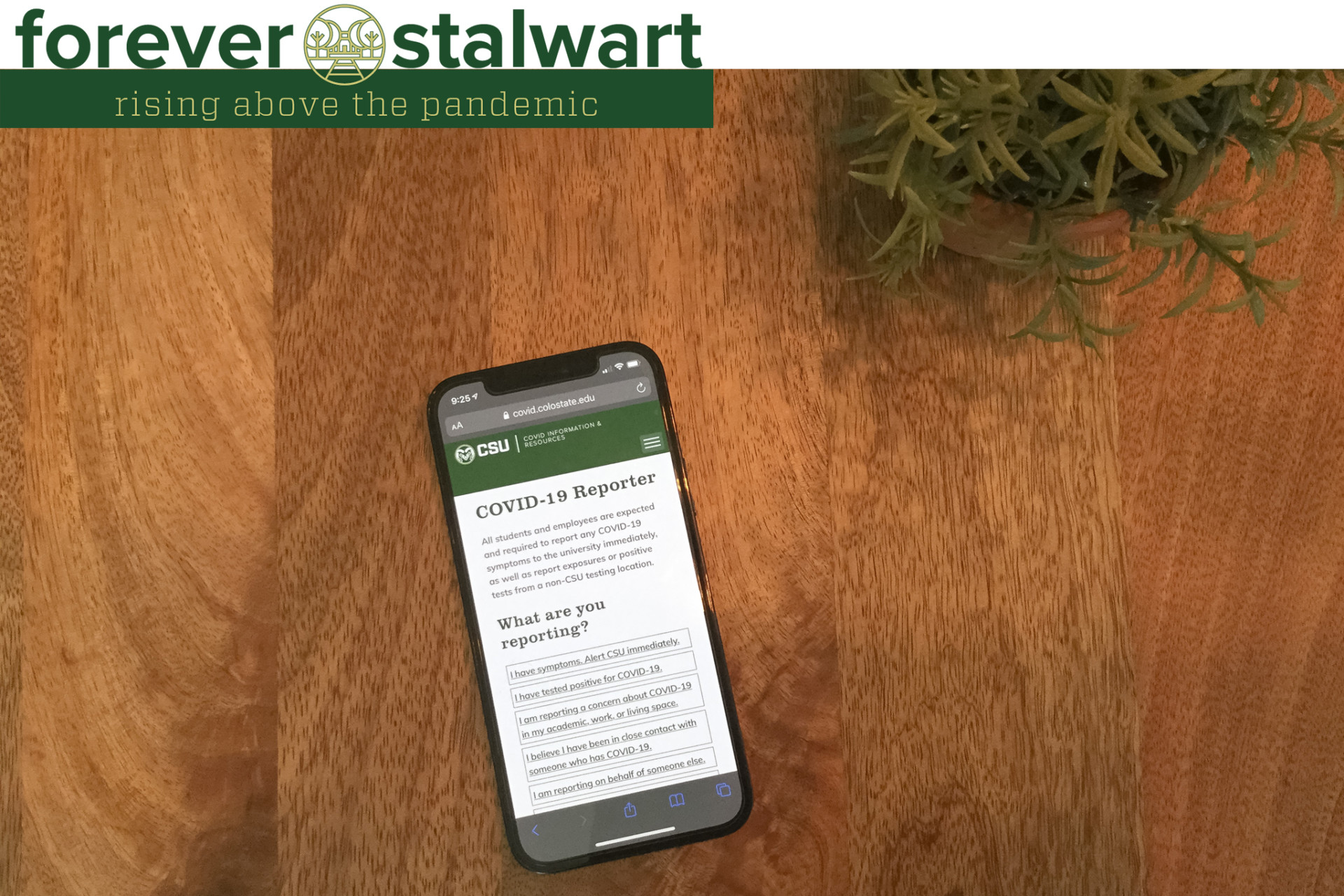
It bears repeating: Any member of the Colorado State University community – students, faculty, staff – are expected to report COVID-19 symptoms to the university, however mild or suspect, and regardless of whether they are regularly on campus.
To make this process seamless and provide one place for reporting symptoms, exposures and other concerns, CSU public health officials launched the COVID-19 Reporter in November. Keep that link bookmarked, and use it as often as needed.
Use the COVID-19 reporter to:
- Report symptoms
- Report a positive test for COVID-19, especially if from a non-CSU site
- Report a concern about COVID-19 in an academic, work or living space
- Report close contact with someone who has COVID-19
- Report a violation of public health protocols, like someone not wearing a mask
Back almost a year ago, when the pandemic was first unfolding, CSU Public Health launched the “Daily Symptom Checker,” which required anyone coming to university grounds to report how they were feeling that day, whether they had symptoms or not.
It soon became apparent that that system needed to change, and the best strategy would hinge, instead, upon people reporting if and when they felt sick or knew they were potentially exposed – even if they didn’t have symptoms, according to Lori Lynn, co-chair of the Pandemic Preparedness Team and executive director of the CSU Health Network. That, coupled with the fact that many college-aged individuals were proving to be asymptomatic carriers, prompted the shift to a simpler platform without a daily check-in.
“As we added face-to-face classes back to our campuses, it became clear that it was a confusing message to ask thousands of students to check for symptoms each day, because it created a false sense of confidence that if they did not have symptoms, they weren’t infected,” Lynn said.
The change to asking people to report symptoms, potential close contacts, or when they test positive at a non-CSU site, along with ramped-up CSU testing and screening efforts, has allowed the university to more efficiently capture the information it needs. Each of these kinds of reports is key to pinpointing potential cases and responding with public health measures.
Team effort
Launching the COVID-19 reporter was a team effort. The University Communications Web Communications team designed and packaged it, while Office of the Registrar and Environmental Health Services technology staff reframed the back end. The CSU Health Network provided additional technical input.
While users access the online COVID-19 Reporter as the single point of contact for all COVID-related concerns, the back end software routs topics to the appropriate department on campus. Reports of symptoms, positive tests, concerns in an academic, work or living space, or potential exposures go to CSU Public Health, while reports of public health violations, such as someone not wearing a mask, go to Human Resources and Student Conduct Services.
CSU Public Health, which operates out of Environmental Health Services under the purview of the Pandemic Preparedness Team, has about 22 people working on responding to COVID-19 reporter queries or reports.
In early January, the system had gathered more than 335,000 reports since the summer, which included some people reporting when they did not have symptoms.
The bottom line: To keep CSU open, it’s critical that anyone with symptoms, has tested positive at a non-CSU site, or believes they may have been exposed to the coronavirus lets the university know through the COVID-19 Reporter. Those who report can expect a follow-up contact from a public health staff member.
More information
COVID-19 Reporter: covid.colostate.edu/reporter